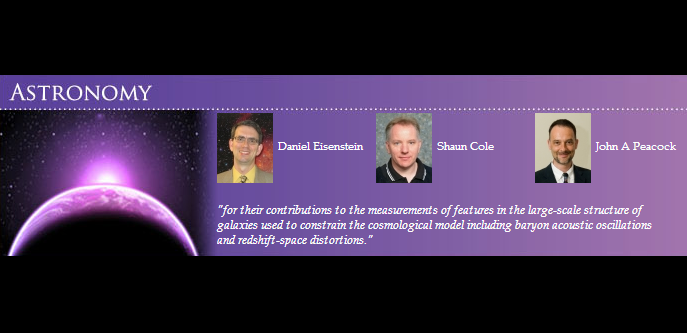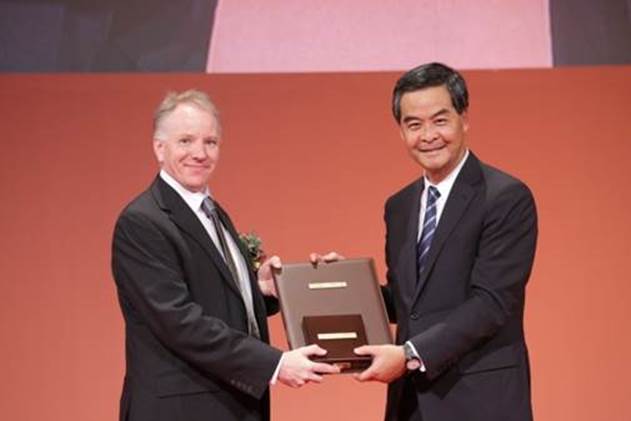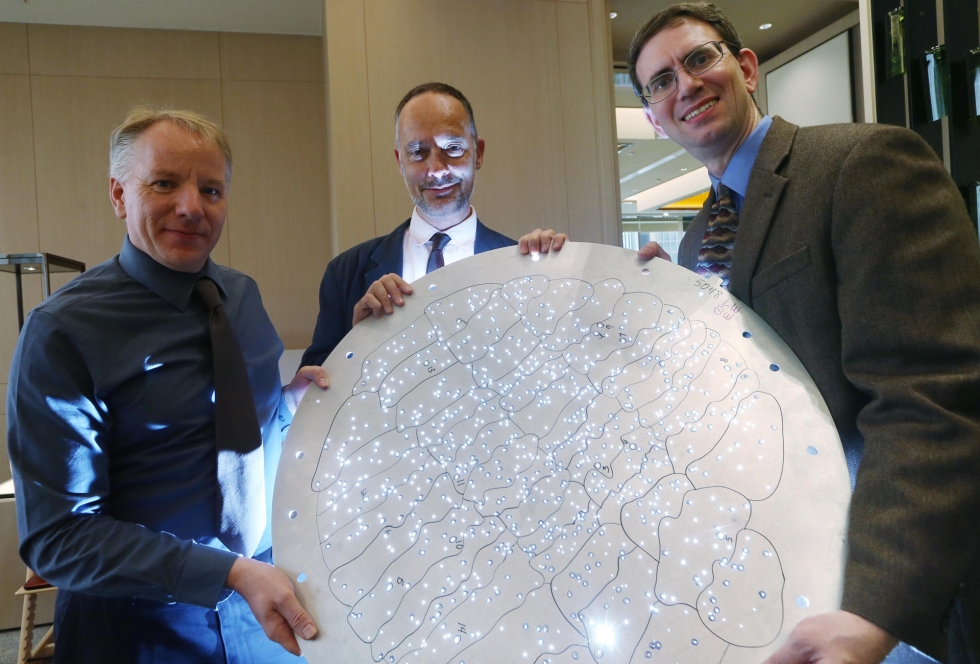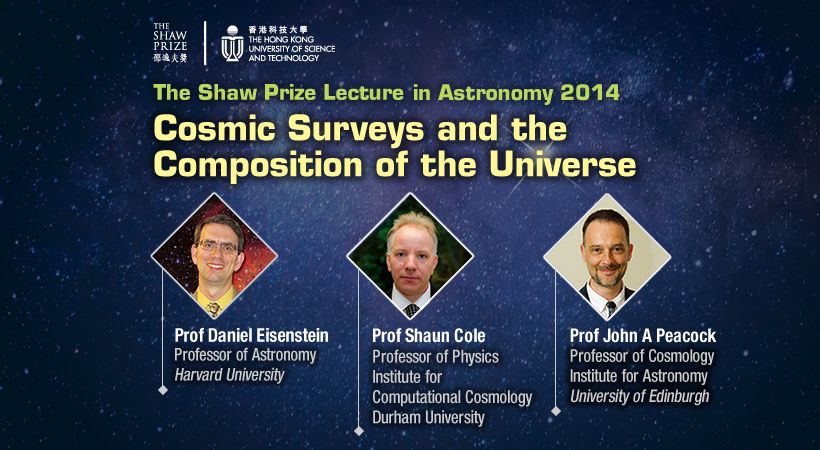


The 2014 Shaw Prize for Astronomy was awarded jointly to Daniel Eisenstein (Harvard), Shaun Cole (Durham) and John Peacock (Edinburgh). The citation reads:
"for their contributions to the measurements of features in the
large-scale structure of galaxies used to constrain the cosmological model
including baryon acoustic oscillations and redshift-space
distortions."

Shaun Cole and John Peacock received half the prize for their work as part of the 2dF Galaxy Redshift Survey team. The other half of the prize was awarded to Daniel Eisenstein for his work with the Sloan Digital Sky Survey (SDSS).
The 2dFGRS team used the robotic 2dF spectrograph on the AAT telescope to measure the redshifts of 220,000 galaxies between 1995 and 2003. The survey was 10 times larger than previous similar surveys and enabled the construction of the largest 3 dimensional map of the positions of galaxies in our local universe.
Galaxies, and in fact all baryonic matter (matter made up of atoms containing neutrons and protons), only make up a small proportion of the mass density in the Universe as a whole. The majority of the mass is in some form of invisble Dark Matter which interacts with normal (baryonic) matter via gravity. Nevertheless galaxies such as those mapped by 2dFGRS can be used as tracers of the underlying mass distribution. Large computer simulations of the evolution of structure in the Universe can be used to illustrate the way in which galaxies trace the underlying Dark Matter.
The large scale distribution of galaxies and dark matter is not completely random. Theory predicts that the distribution has imprinted in it characteristic scales whose origin is the physics of the early Universe. Soon after the Big Bang the Universe was full of a hot highly ionized plasma. In this photon rich plasma sound waves travel at almost 60% of the speed of light. The sound waves stop travelling when the Universe has expanded and cooled sufficiently for neutral atoms to form. At this point photons stop interacting with the gas resulting in a dramatic drop in pressure and a corresponding drop in the sound speed. This happens 400,000 years after the Big Bang when the temperature in the Universe is about 3000 Kelvin. The Universe has expanded by a factor of a 1000 in the intervening 13.6 billion years, but the imprint of the distance the sound waves travelled is still encoded in the large scale cosmic structure. Today cosmic expansion has streteched the length scale of these Baryon Accoustic Oscillations (BA0) to be 500 million light years.
In early 2005, the 2dFGRS and SDSS teams jointly announced the statistical detection of this BAO length scale in the large scale distribution of galaxies probed in the 2dF and SDSS galaxy redshift surveys, validating this aspect of the Big Bang model. Detecting the BAO length scale was also an important step to future tests of cosmic expansion and Dark Energy. The BAO length can be used as a huge cosmic surveyor's yardstick. Detecting its angular size in subsequent more distant galaxy redshift surveys allows astronomers to make direct geometrical measurements of the expansion history of the Universe. This in turn can be used to probe the nature of the Dark Energy which is now driving the cosmic expansion.
Shaw Prize Essay: An essay comissioned by the
Shaw Prize Organisation and written jointly by the prize
winners. It describes the science behind the prize and was based on
the public lecture given at the Hong Kong University of Science and Technology

2dFGRS fly through: This
movie
takes you for a fly through the galaxy distribution mapped by the 2dF
galaxy redshift survey. (Movie credit:
Institute for Computational Cosmology, Durham University)
A night on 2dF: This 3 minute movie produced by the AAO shows the 2dF instrument in operation on the 3.9m Anglo-Australian Telescope. It starts by showing the robot positioning at set of 400 optical fibres that are used to capture the light and measure the redshifts of 400 galaxies simultaneously.
Iphone/Ipad App: This iphone/ipad app can also be download by entering "Cosmic Universe" on an iphone/ipad and then following the instructions.
Presentation Ceremony:
A Hong Kong TV
news report from the presentation ceremony
Link to a
longer video of the ceremony also available on the Shaw
Prize website .
Mini documentary: The cantonese version of the epsiode of the Pearl Report on the 2014 Astronomy Prize Part 1 and Part 2
A variety of downloadable material produced by the ICC covering the formation and evolution of large scale structure in the Universe is available here. Much of this was produced for a series of exhibits at the Royal Society Summer Science Exhibition.
14min introductory video explaining astronomical distances, the expanding Universe, galaxy redshifts and structure formation, featuring Pete Edwards and Carlos Frenk of Durham University.
A more comprehensive lecture "Gravity, gas and stardust" by Pete Edwards (Durham University)